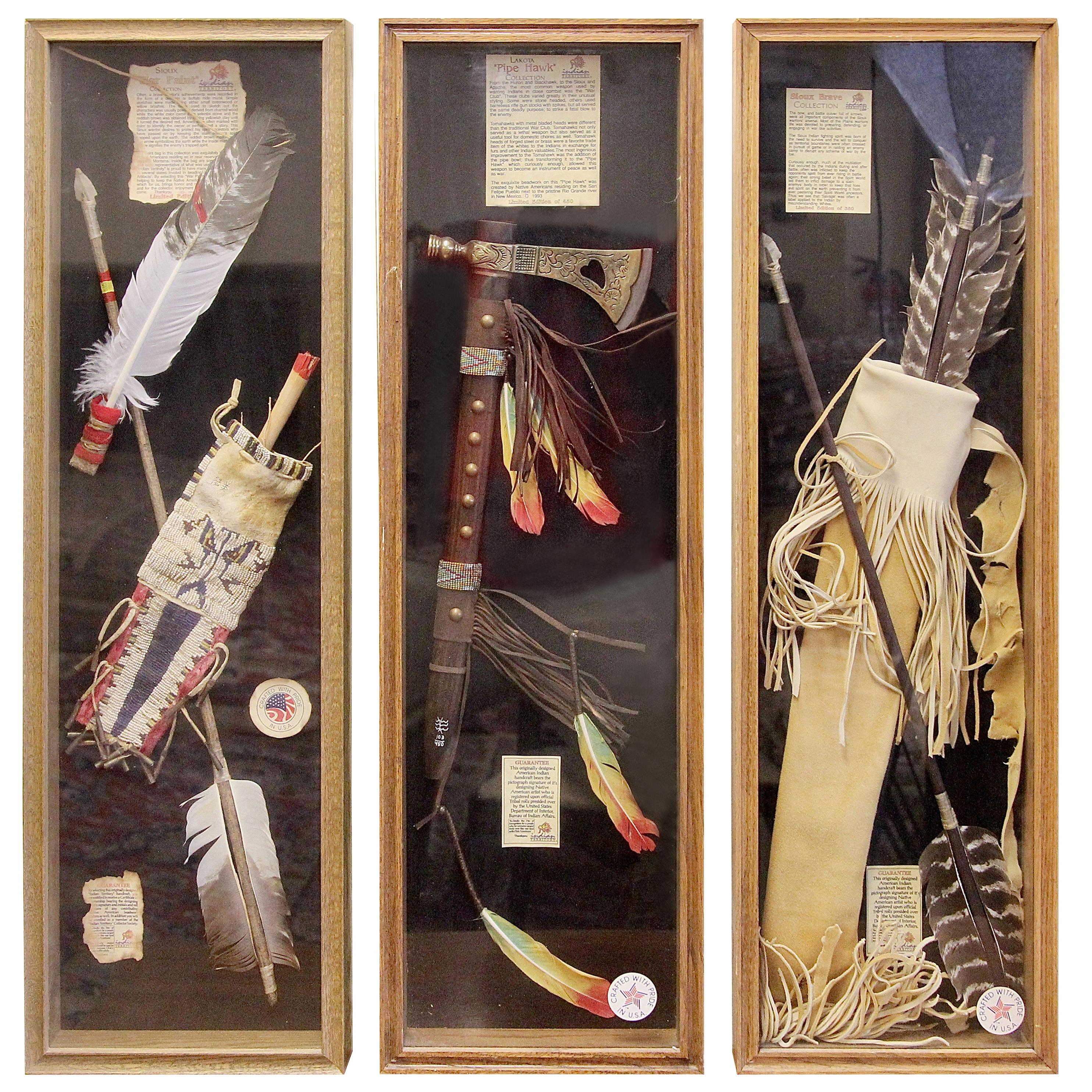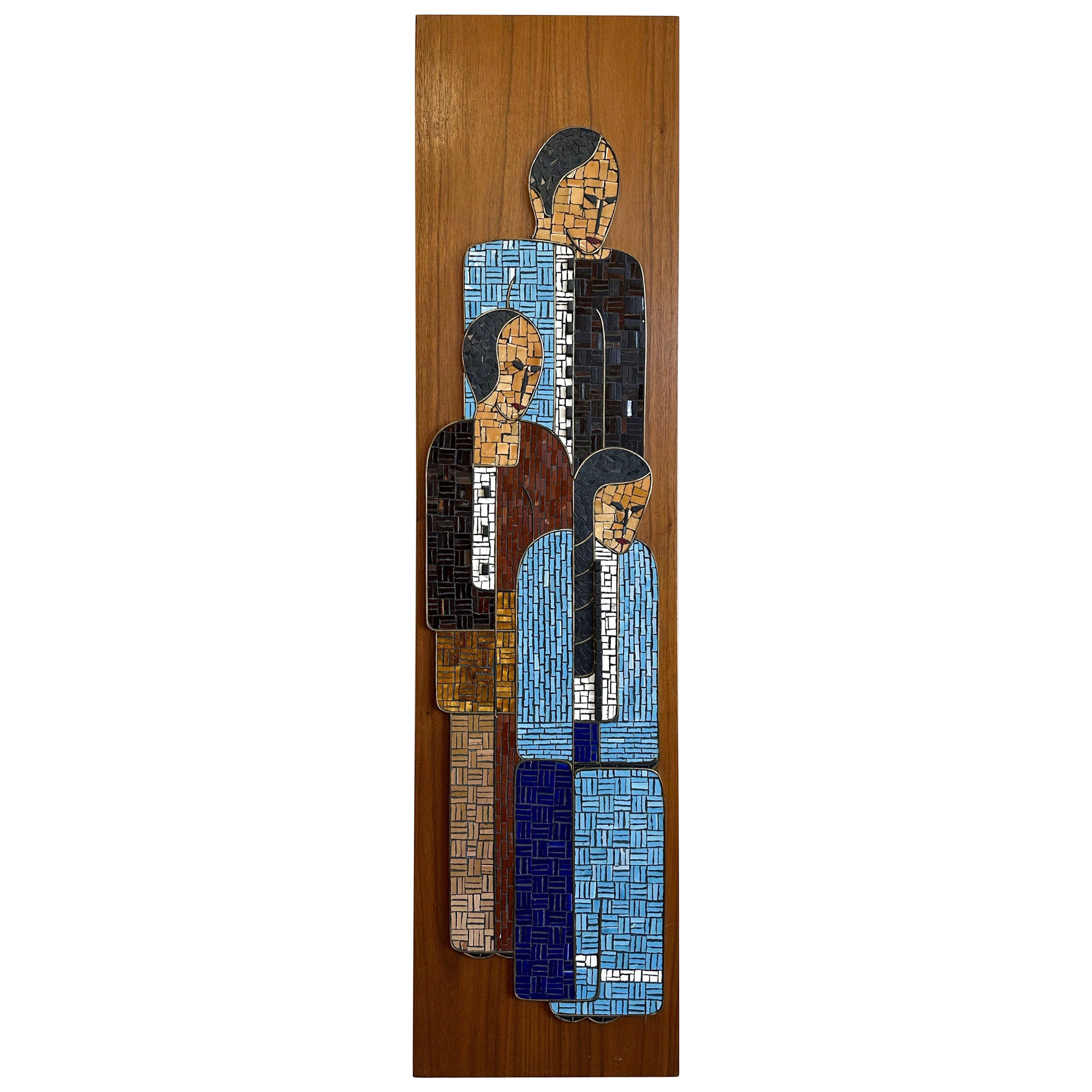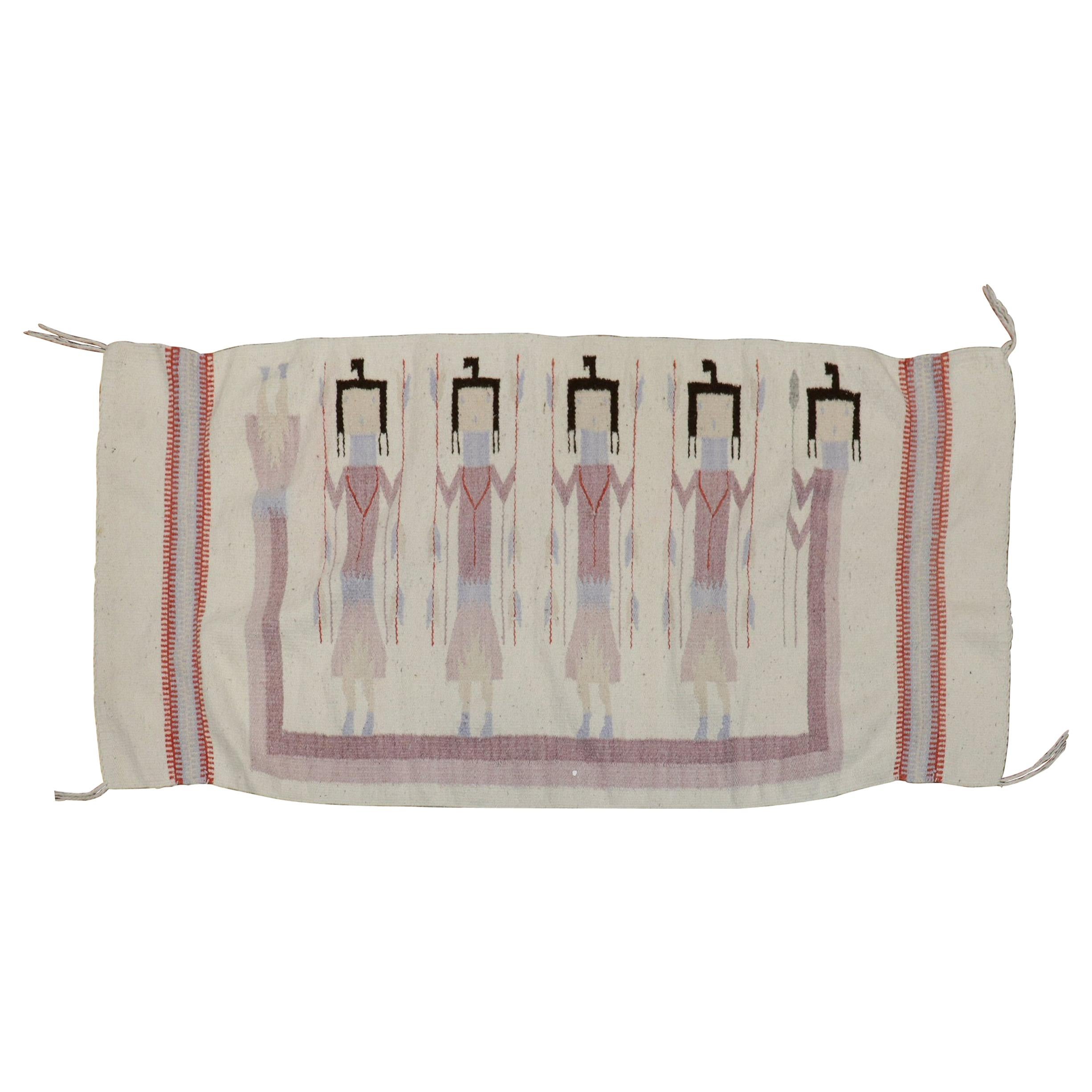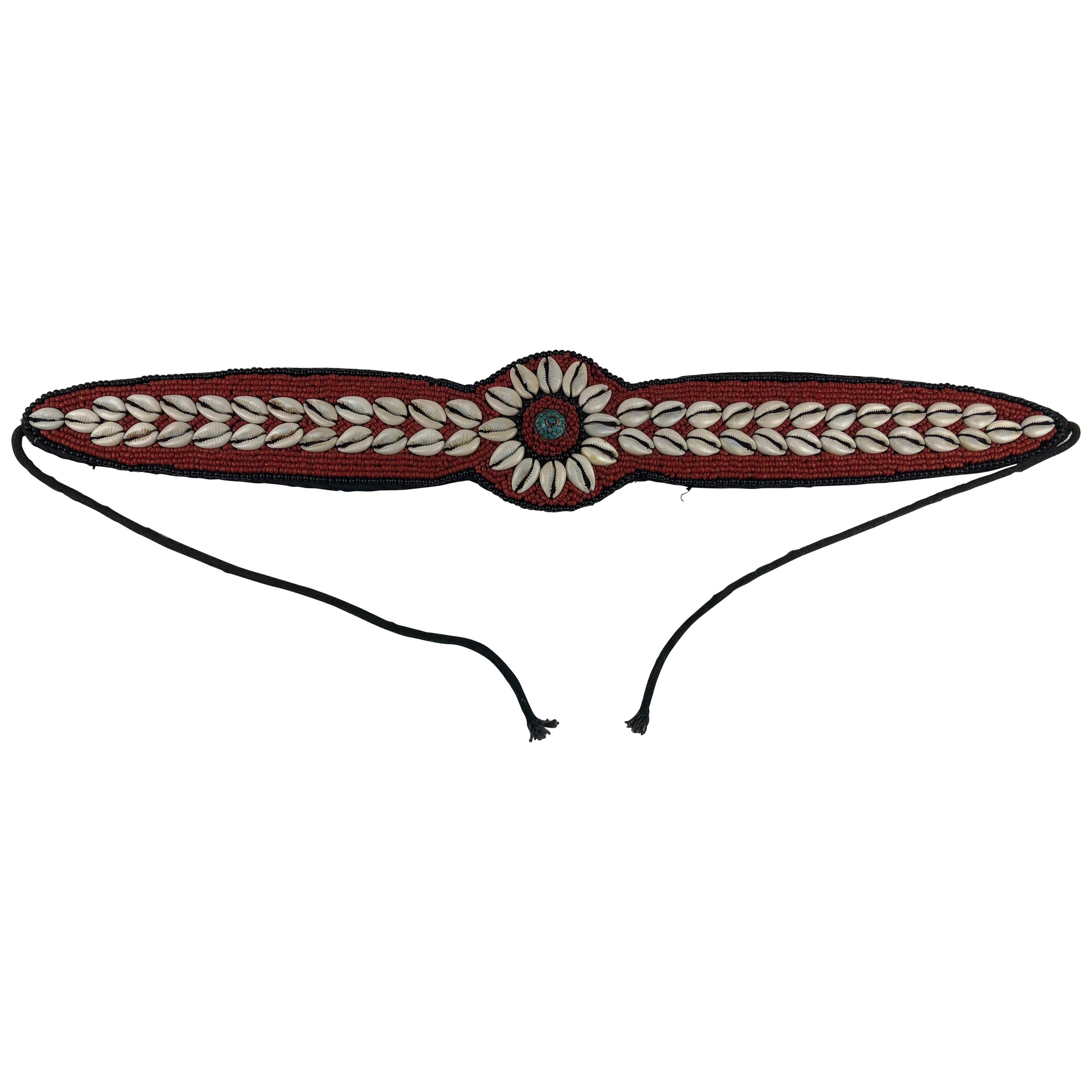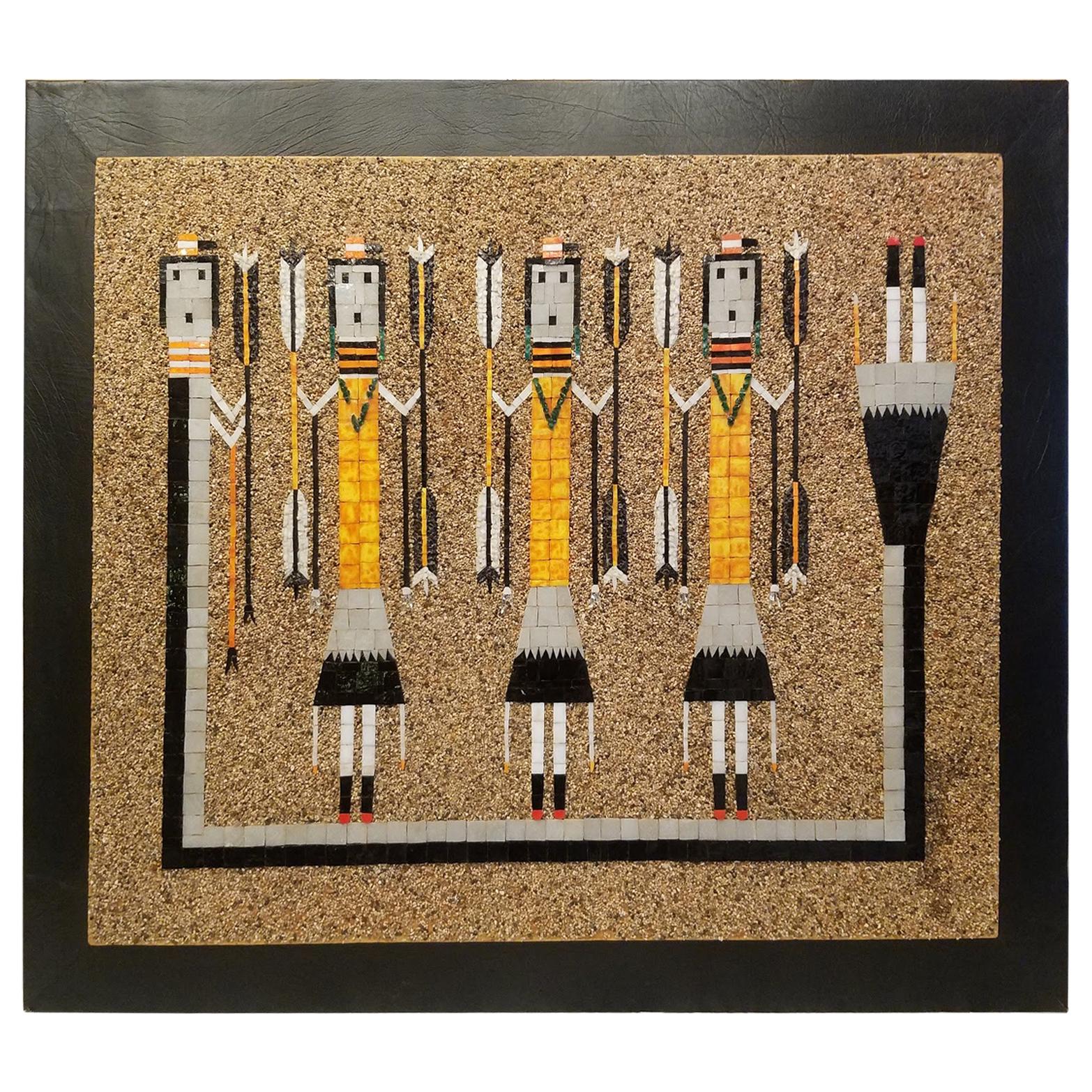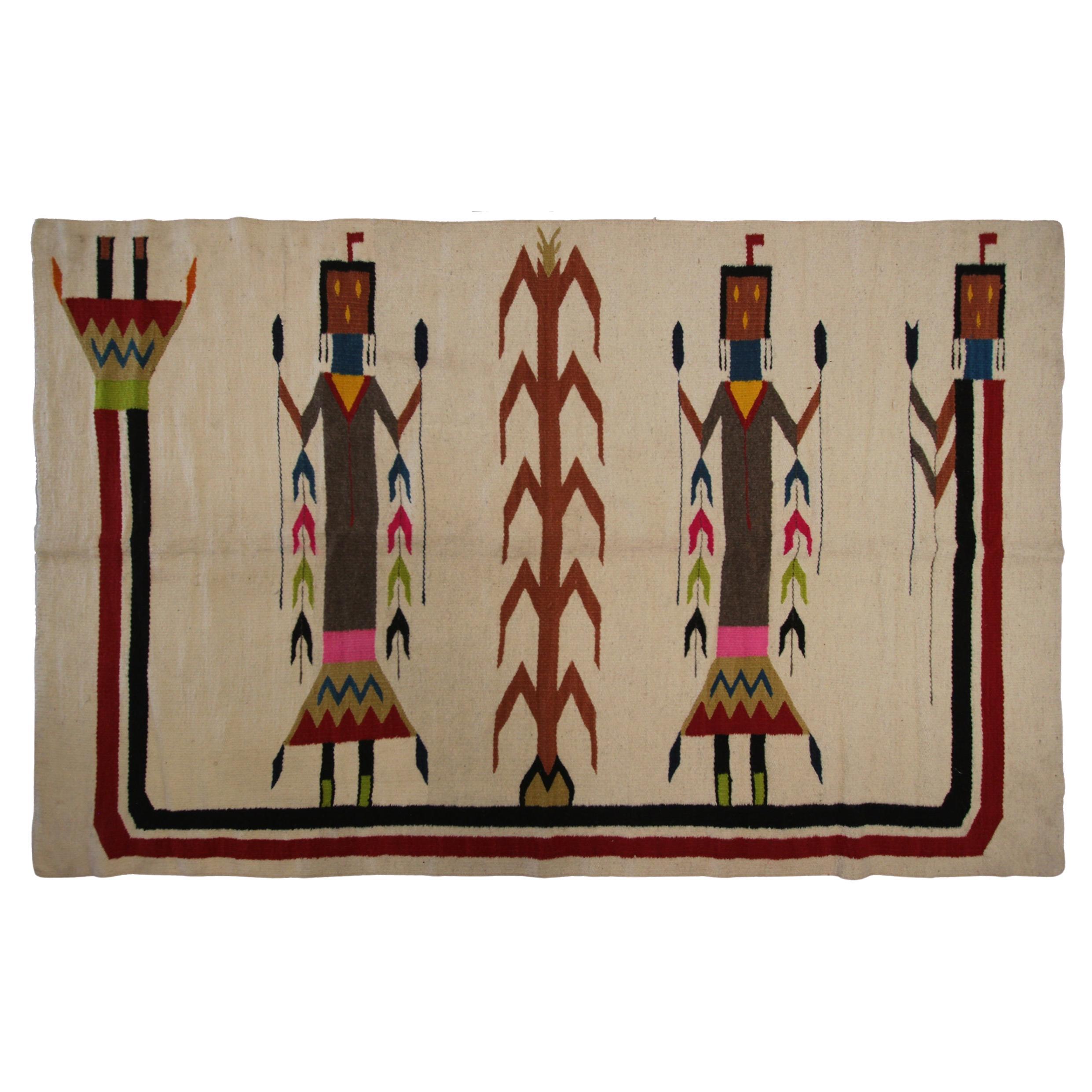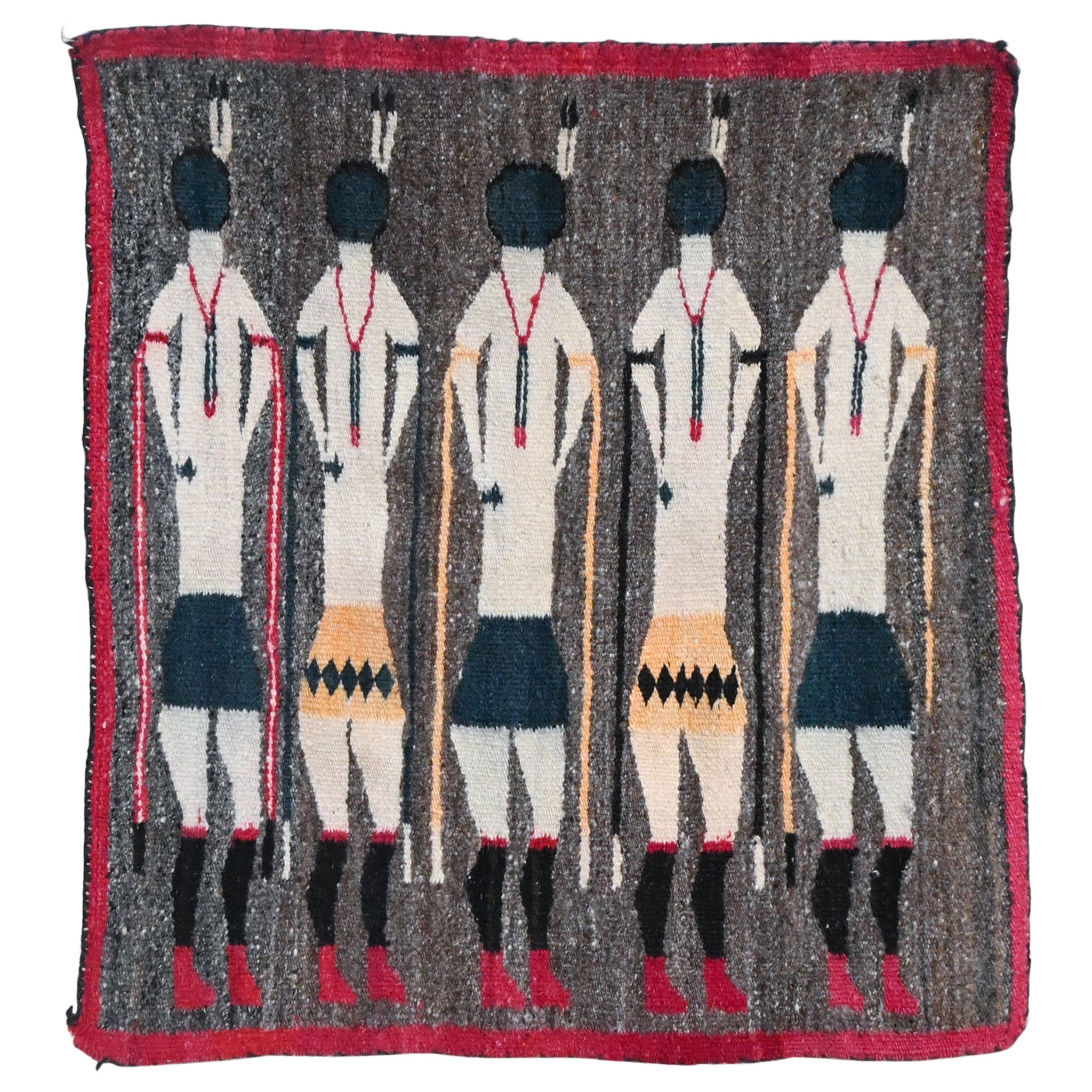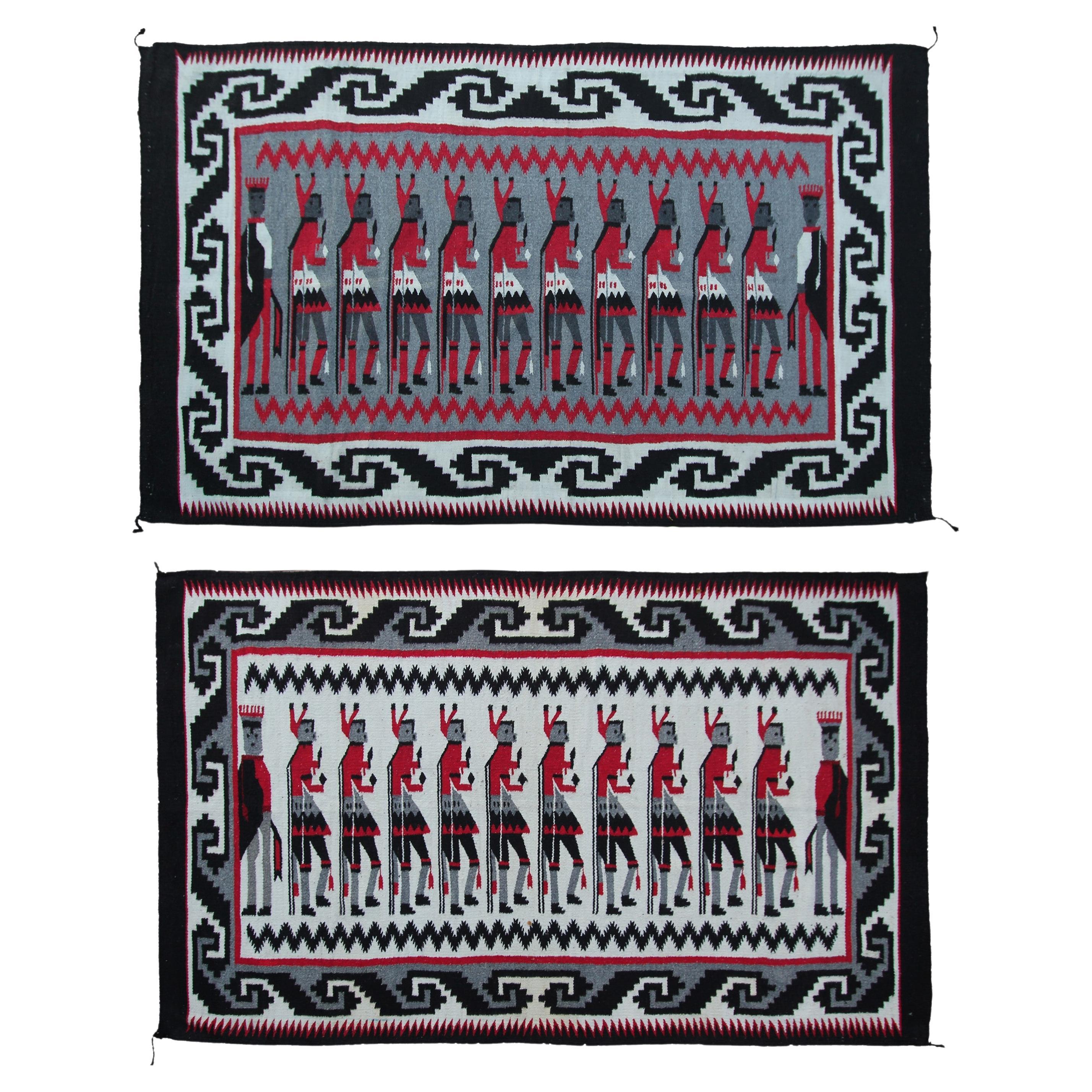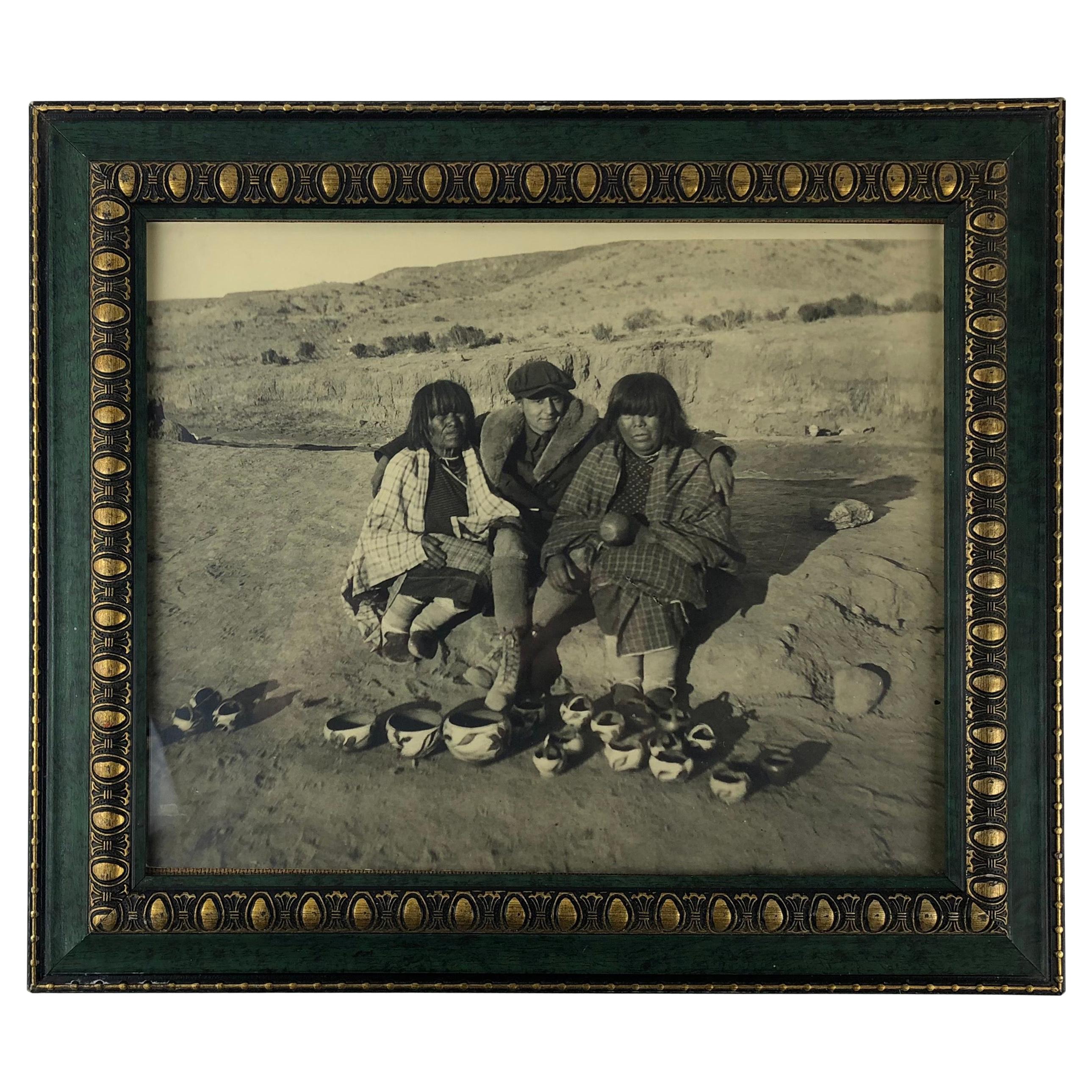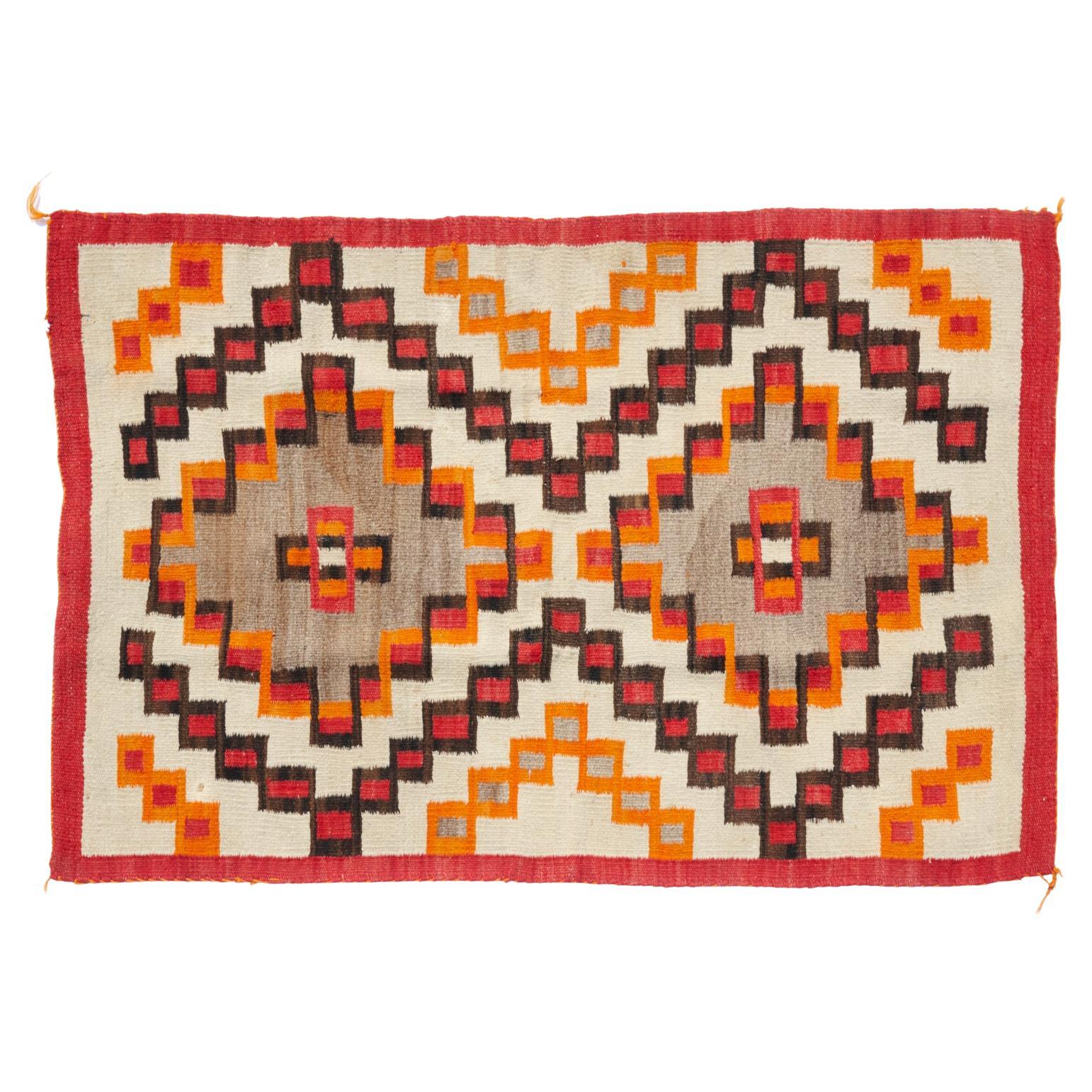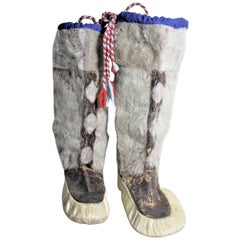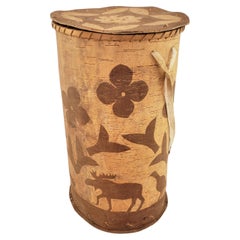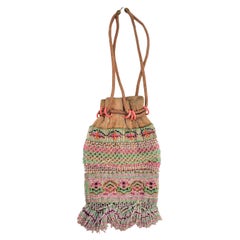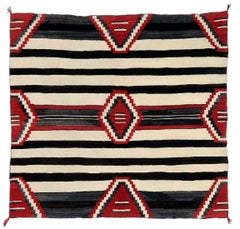
Vintage Indigenous Navajo Inspired Mounted Terracotta Tile Depicting 'Yei"
View Similar Items
Want more images or videos?
Request additional images or videos from the seller
1 of 8
Vintage Indigenous Navajo Inspired Mounted Terracotta Tile Depicting 'Yei"
About the Item
- Dimensions:Height: 16.75 in (42.55 cm)Width: 20 in (50.8 cm)Depth: 1.25 in (3.18 cm)
- Style:Navajo (In the Style Of)
- Materials and Techniques:
- Place of Origin:
- Period:
- Date of Manufacture:1970
- Condition:Wear consistent with age and use. Some areas of dirt and discoloration to the cream colored burlap backing as presented in the photos, and consistent with age and use.
- Seller Location:Hamilton, CA
- Reference Number:1stDibs: LU1355229106712
About the Seller
5.0
Platinum Seller
These expertly vetted sellers are 1stDibs' most experienced sellers and are rated highest by our customers.
Established in 2010
1stDibs seller since 2015
Typical response time: 1 hour
More From This SellerView All
- Pair of Vintage Indigenous American Inuit Mukluks or BootsLocated in Hamilton, OntarioThis pair of vintage Inuit mukluks are presumed to have been made in Canada in circa 1950 in the Indigenous American Folk Art style. The upper portions a...Category
Mid-20th Century North American Native American Native American Objects
MaterialsFur, Leather, Wool
- Large Vintage Indigenous Canadian Lidded Birch Bark Painted Shoulder BasketLocated in Hamilton, OntarioThis large hand-crafted basket is unsigned, but presumed to have originated from Canada and date to approximately 1970 and done in the period indigenous Canadian...Category
Mid-20th Century Canadian Native American Native American Objects
MaterialsBirch
- Vintage Small Leather and Beaded Indigenous Styled Pouch or Draw String BagLocated in Hamilton, OntarioThis small hand-crafted beaded leather pouch or tobacco bag is unsigned, but presumed to have been made in the United States in approximately 1970 in an Indigenous American...Category
Late 20th Century American Native American Trunks and Luggage
MaterialsLeather
- Indigenous Styled Large Handwoven Bird Beak Fancy Lidded BasketLocated in Hamilton, OntarioThis Indigenous styled lidded basket is presumed to have been made in the United States in circa mid-late 20th century. The maker of the this basket is unknown, but done in the style...Category
Late 20th Century American Native American Decorative Baskets
MaterialsReed, Softwood
- Thomas B. Maracle Indigenous Canadian Mohawk Stone Carving or SculptureLocated in Hamilton, OntarioThis large Indigenous North American stone carving was done by Thomas B. Maracle of the Mohawk Nation in circa 1985 in his signature Indigenous Folk Art...Category
Late 20th Century North American Native American Native American Objects
MaterialsStone
- Indigenous American West Coast Haida Styled Carved & Polychrome Painted TotemLocated in Hamilton, OntarioThis folk art carved and polychrome painted totem pole is signed by an unknown artist and originated from the United States and dates to 1985 and d...Category
Late 20th Century American Native American Native American Objects
MaterialsCedar
You May Also Like
- 10 x Native American Indian Territory Handcraft, Limited Edition, Sioux, NavajoLocated in Berlin, DE10 x originally designed American Indian Territory Handcraft, limited edition Collection of 10 important, detailed handcrafted Indian relics, artifacts. 1 x crazy horse, limited edition of 100, showcase 107cm x 35.5cm x 10.5cm 2 x Sioux war paint...Category
20th Century American Native American Native American Objects
MaterialsWood
$17,429 Sale Price / set20% OffFree Shipping - Large Glass Tile Mosaic of Native American Family on Walnut Board, 1960sLocated in San Francisco, CAA large and exceptionally well done Mid-Century Modern glass and glazed ceramic tile mosaic on walnut board depicting a Native American trio, titled “Family”. Stylized figures of ...Category
Vintage 1960s American Mid-Century Modern Decorative Art
MaterialsBrass
$1,400 Sale Price30% Off - Antique Navajo Chief Blanket Third Phase RevivalLocated in Atlanta, GAOn offer is a Navajo chief blanket of the third phase circa 1895-1920s. The chief blanket is the highest achievement of the Navajo textile develop...Category
Early 20th Century American Navajo Tapestries
MaterialsYarn
- 1870s Transitional Plateau Rawhide Parfleche Envelope with Geometric PatternsBy Plateau IndiansLocated in Denver, COA parfleche container in an envelope form, finely painted in an abstract design. Makes a stunning wall hanging alone or in a grouping with other parfleche or can be placed on a shelf or Stand. This was created by a North American Indian living in the Plateau cultural area - encompassing portions of what is now northern Idaho, western Montana, northeast and central Oregon, eastern Washington and southeast British Columbia. The tribes from this region include Kalispel, Flathead, Kutenai, Palus, Coeur D'Alene and Nez Perce. Parfleches are rawhide containers which were fundamental to the Plains way of life. Functioning essentially as protective travelling suitcases, they enabled the nomadic tribes to effectively pursue buffalo herds and migrate between seasonal camps. So critical were they to a nomadic existence that over 40 tribes are known to have historically produced parfleches. Collectively, these tribes inhabited an area which encompassed the entirety of the Plains, as well as the parts of the Southwest, the Transmontane and Western Plateau regions. Parfleches were, out of necessity, robust and versatile objects. They were designed to carry and protect within them anything from medicinal bundles to seasonal clothing or food. In fact, it was because of the containers’ robusticity and variety that parfleches earned their name in the Anglo world. Derived from parer (to parry or turn aside) and fleche (arrow), the word parfleche was coined by 17th century French Canadian voyageurs and used to describe indigenous objects made from rawhide. Despite their common utilitarian function, parfleches served as one of the major mediums through which Plains Indian tribes could develop their long-standing tradition of painting. In fact, it is in large part due to the parfleche that tribal style emerged. Even though parfleche painting developed simultaneously with beading and weaving, painting as an artistic tradition held particular importance in tribal culture. Believed to have evolved from tattooing, it had always been used as a conduit through which tribal and individual identity could be expressed. As such, many tribeswomen were deeply committed, some even religiously, to decorating their parfleche either with incised or painted motifs that were significant to them and/or the tribe. For some tribes, such as the Cheyenne, the decorative processes which surrounded parfleche production were sacred. For others, it seems that their parfleche designs shared an interesting artistic dialogue with their beadwork, indicating a more casual exchange of design motifs. This particular relationship can be seen in Crow parfleche...Category
Antique Late 19th Century North American Native American Native American...
MaterialsHide
- Vintage Mexican Textile Pictorial Yei Weaving RugLocated in New York, NYVintage Mexican pictorial rug weaving with five Yei (Yeibichai) figures holding feathers. Woven of native hand-spun wool in natural fleece yarns ...Category
20th Century Mexican Native American North and South American Rugs
MaterialsWool
- Native American Belt Attributed to the Shinnecock PeopleLocated in Miami, FLA stunning hand-crafted belt featuring a beautiful turquoise stone. This very decorative native belt attributed to the Shinnecock People of the United States of America would look wo...Category
20th Century American Tribal Native American Objects
MaterialsShell, Fabric
$760 Sale Price20% Off
Recently Viewed
View AllMore Ways To Browse
American Vintage Style
Craft In America
American Retro Style
American Vintage Mid Century
Mount Vintage
Vintage Inspired
Vintage Native
Vintage Tile
Vintage Burlap
Vintage Tiles
Art Craft Tile
Vintage Navajo
Mid Century Tile Art
Midcentury Tile Art
Retro Style Tiles
Vintage Navajo Furniture
Art Tile And Art And Crafts
Heals Mid Century
